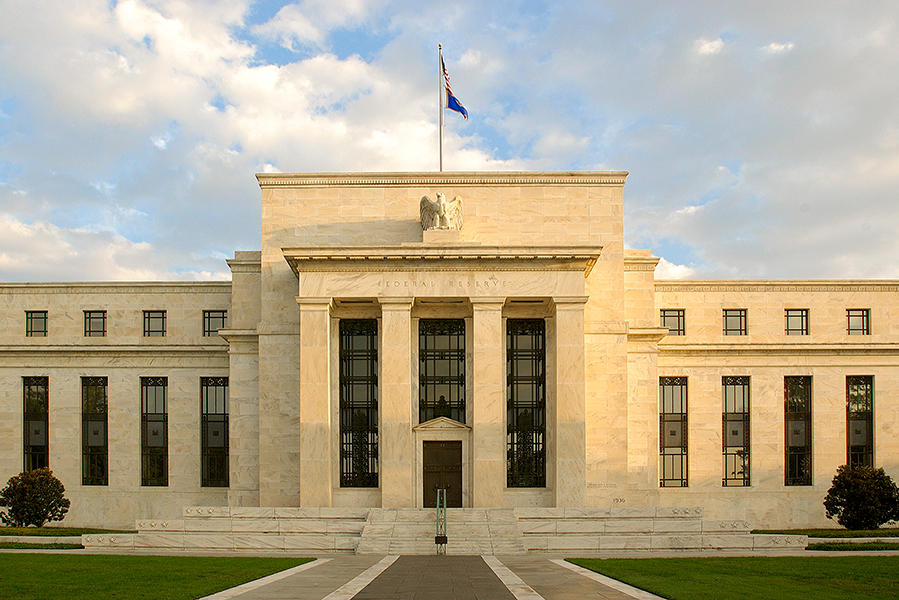.png)
CDX IG Surges Amid Tariff Turmoil: A Red Flag for Rising Credit Risk
An underappreciated signal, the CDX IG’s surge hints at looming credit stress, with India’s capital flight and trade vulnerabilities quietly at risk.

April 7, 2025 at 3:15 AM IST
The Markit CDX North America Investment Grade Index, a key gauge of credit market sentiment, widened to 64.9 basis points on Thursday, its highest level since November 2023, as investors rushed to hedge against the fallout from the US administration’s sweeping new tariff measures. The CDX IG closed at 62.64 basis points on Nov 30, 2023, according to an AmeriVet Securities report.
Earlier, when the Federal Reserve halted its rate hikes, investors saw the pause as a sign that policymakers were easing their aggressive stance, which boosted confidence and narrowed credit spreads.
Back then, markets were digesting a potential end to the Fed’s tightening cycle. Now, the concern is exogenous — rooted in trade policy rather than monetary conditions — but the outcome is similar: a flight to safety and a defensive credit posture.
The sudden move in CDX IG reflects growing unease across credit markets, signalling a shift in investor sentiment from cautious optimism to defensive positioning.
Decoding CDX IG
The CDX IG index represents a basket of credit default swaps on 125 of the most liquid investment-grade North American companies. A widening in the index indicates investors are demanding more insurance against the risk of default — in other words, credit risk is rising.
The recent spike marks a departure from the relative calm in the first quarter of 2025, when the index hovered in the mid-50s. This shift suggests a reassessment of corporate creditworthiness, driven largely by macroeconomic and policy developments.
Tariff Shock
The catalyst? The US government’s announcement of reciprocal tariffs designed to fix trade imbalances and support local industries. While policy specifics remain murky, markets have swiftly priced in the collateral damage — higher business costs, supply chain disruptions, and shrinking profit margins. These conditions are especially troubling for credit markets, where confidence in borrowers' ability to meet their obligations is key. Rising input costs and uncertainty around trade relationships could pressure corporate earnings, particularly in sectors with global exposure.
Hedging Heats Up
The move in CDX IG reflects more than just deteriorating fundamentals. Surging hedging activity suggests institutional investors are taking precautionary steps to protect their portfolios in case of a broader downturn in corporate credit. Amid rising uncertainty, many are opting to pay more for credit protection rather than risk being exposed to worsening conditions.
Echoes of November 2023
When the Markit CDX IG Index spiked in November 2023, it foreshadowed a grim reality: 14 corporate defaults that month, far exceeding historical norms. The defaults were concentrated in sectors already under pressure—media and entertainment, consumer products, and healthcare—where companies struggled with high debt and shrinking cash flows. In the US alone, nine companies defaulted, including the likes of WeWork, Audacy, and CWT Travel. Most of these involved distressed debt swaps and missed interest payments, exposing how thinly stretched some balance sheets had become.
By year-end, corporate defaults had surged by 80% year-on-year, with 153 total defaults globally, according to S&P Global. The CDX IG’s surge in November, it turns out, was the canary in the coal mine. It underscored how market-based indicators can offer timely insight into growing financial strain, evidence that credit markets often sense trouble long before defaults make headlines. Rising rates and tighter lending had pushed overleveraged firms to the brink, and the index caught the scent early.
India At Risk?
While the CDX IG index tracks North American credit risk, its sharp rise signals broader stress in global credit markets. For India, the risk is two-fold. A "risk-off" mood could spur capital outflows from emerging markets, pressuring the rupee and triggering volatility in financial markets. Companies reliant on foreign funding — especially those issuing dollar or euro bonds — could face higher borrowing costs, delayed fundraising, or reduced access to overseas debt markets.
Additionally, export-heavy sectors—pharmaceuticals, chemicals, and IT services—could be impacted if global trade slows due to rising protectionism or policy uncertainty. Even domestically focused firms may grapple with tighter liquidity as financial institutions brace for contagion.
In that sense, the surge in CDX IG isn’t just a North American problem—it’s a global wake-up call. It urges corporates to prepare for potentially tighter global financial conditions and slower economic momentum.
The Road Ahead
While 64.9 bps is not alarmingly high by historical standards, its trajectory is crucial to watch. Should the trade war escalate or earnings falter, credit markets may face sustained pressure. Key signposts include corporate earnings, trade measures, and central bank rhetoric.
The widening of the CDX IG index serves as a red flag for rising credit risk, driven by policy uncertainty and its potential ripple effects across corporate balance sheets. Whether it’s a brief spike or the start of a more sustained repricing remains to be seen. For now, credit markets are hedging their bets.



